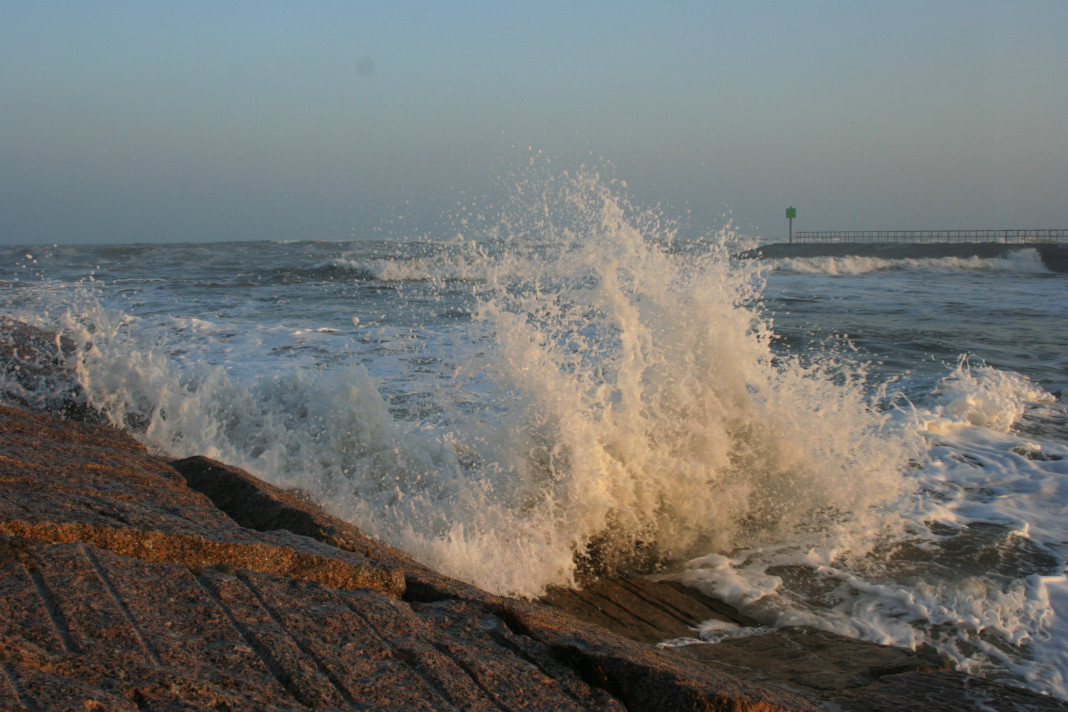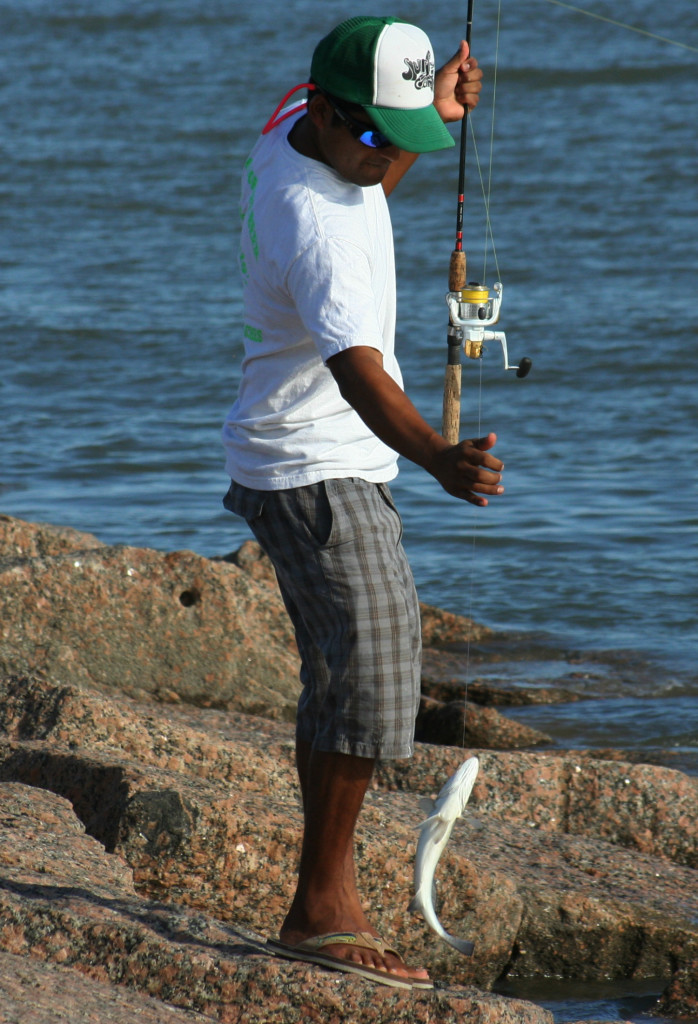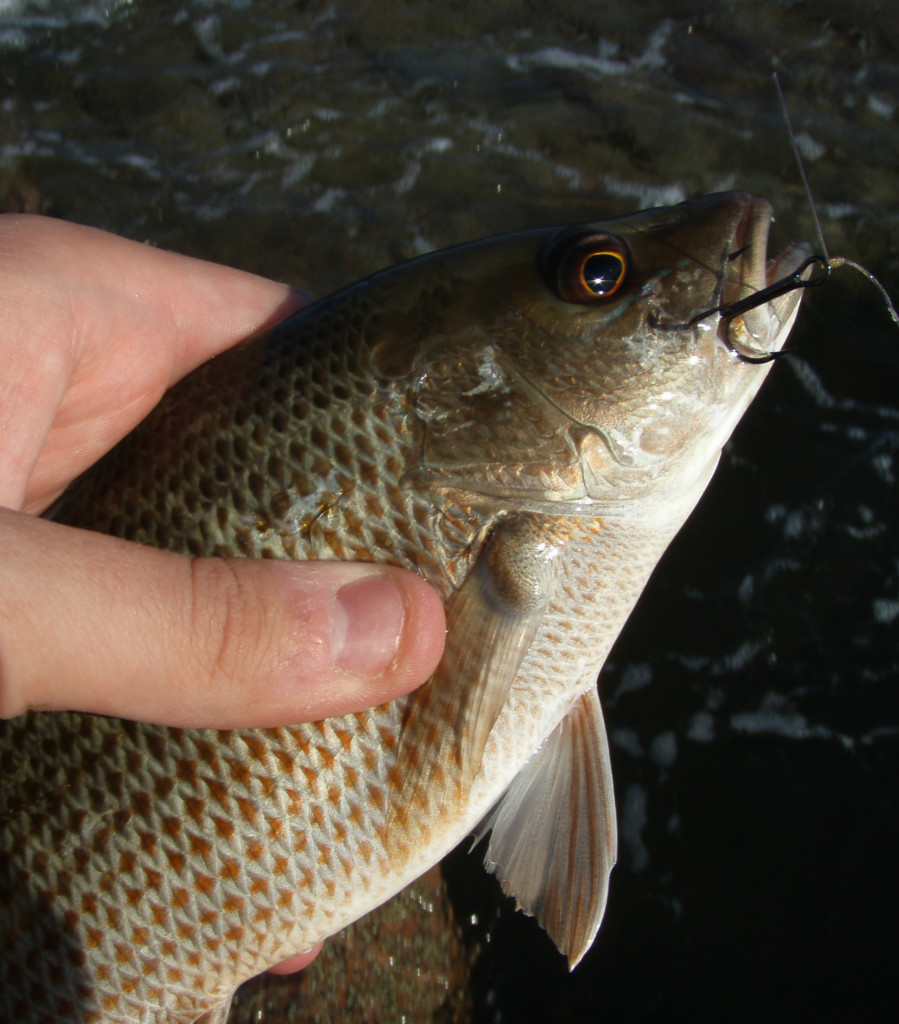When discussing great saltwater fishing spots, some of the best locales in Texas are literally between a rock and a hard place.
Our state has an amazing array of manmade fishing haunts, but none compare to the jetty systems that dot the Gulf coast, providing some of the finest angling conditions imaginable. The miles of rocky outcroppings from Sabine Pass to Port Mansfield – and everywhere in between – are magnets for game fish of all shapes and sizes, offering the everyman angler their best chance to come close to the biggest and best fish swimming in the salt. While designed specifically for shipping and created to prevent silting-in of dredged channels, the fishing impact of jetties is almost incalculable.
The food chain in these locales is simply amazing, and is akin to hunting in the Hill Country: you just never know what exotics you may cross paths with, especially during peak times of bait fish activity. Some of the largest fish ever documented by Texas anglers, including massive goliath grouper in the 1930s and 1940s weighing more than 500 pounds, were landed at jetties sweeping into the Gulf of Mexico. In addition to notable species such as bull redfish, it’s not uncommon for anglers to also come face to face with offshore species such as ling and snapper while the rare snook and tarpon also can make an appearance.
In between are more common species such as speckled trout and sheepshead, but there also have been invasive lionfish caught near the fish-holding structure, proving that almost anything that swims will at some point be near the rocks. Add in other notable species such as jacks, kingfish, pompano, mangrove snapper and even sharks, and you’ve got a smorgasbord of targets that will hit a variety of bait offerings.
Here’s a guide to Texas jetty fishing, including a glimpse at gear and tactics.
Use proper footwear at the jetties
While some jetties such as those at Packery Channel in Corpus Christi offer paved walking paths, the huge granite boulders that are common in the most frequented areas simply are unforgiving. A short fall or slip can lead to serious injury, and a line of constant algae near the water line is a slick trap waiting for its next victim. A number of seasoned rock walkers are religious in the use of spikes, whether on track cleats or golf shoes, and it makes perfect sense if your feet can handle the mashing metal. Never wear flip flops or other slip-on shoes. They exponentially increase the chance for injury and don’t help provide leverage if you’re fighting a beastly fish.
Use proper gear at the jetties
Jetties feature a variety of unforgiving conditions, especially when it comes to tackle. The depths near the rocks are littered with lost lures of all shapes and sizes, and you should expect to add to that total. I’ve seen many jetty anglers use relatively lightweight tackle – the same kind of spinning and casting outfits you might see while wading coastal flats for tailing redfish – but it’s never a bad idea to up the ante and go heavier. It certainly will help if you find yourself battling a tackle-busting jack crevalle or even something heftier.
Longer surf rods can help launch baits out farther, and if you do choose to go lighter, it doesn’t hurt to use braided line. The edges of jetties are crusted with barnacles and other sharp areas that will slice through lighter mono if given the chance. Wire leaders can be a good choice, not only to add durability when fighting big fish, but also those toothy critters that often are closer than you may think.
Keep it simple at the jetties
The most time-tested and productive lures remain staples of successful jetty anglers. Your tackle box should include plenty of extra hooks, line and leader, and also should have a number of select baits, including spoons, topwater plugs and especially small jigs and mullet and shrimp representations. Live or dead shrimp and crabs and baitfish are never a bad idea either. Lightweight jigs also can be tipped with dead shrimp to catch a number of species such as sheepshead and mangrove snapper.
There are a number of inventive ways to keep a lure from getting stuck in the rocky formations, including a simple lemon (or lime) rig. The rig is tied using a three-way swivel with two attached leaders, one of which has a hook at the end and the other the unmistakable squeeze bottle or similar float. Another common approach is to simply free-line an offering, which can take a lot of practice to master in a surging current but can pay off in a big way.
Stay mobile and read the water at the jetties
There are certain areas along a jetty that are honey holes for any number of reasons, whether it’s because of a slightly different flow of current or a spot with an eroded surface that provides a better hiding spot. The end always is a prime locale, though the early bird typically gets that worm. However, almost any area can be fished, and the decision on what side to work or what bait to use can be predicated on the conditions. If it’s windy and choppy, the outside edge may not be the best place, though the inside edge can be tough in clear conditions when game fish can more easily detect a ruse from the genuine article. It’s also advantageous to know when the tide rises, bringing in an influx of bait fish targets.
It’s not uncommon to draw a crowd when a bunch of fish are in, meaning you must get acclimated to the masses if you’re successful in these very public locales. Should you disapprove of the gathering, you also can try fishing from a boat, which can allow for even more fishing success, though that practice also elicits plenty of danger. Working the edge of the rocks is much easier from a craft, but swells and rough water also can quickly push a boat up on the rocks. Using a stout Danforth-style anchor is advised, as well as having a backup, both rigged with several feet of chain at the end to make them get a better bite below. An electric trolling motor can provide enough maneuverability to stay out of trouble, but it shouldn’t provide a false sense of security, and never raise the anchor without powering up first.
Crabbing along Texas coast geared toward simplicity, fun, food





















Mr lescheper thanks for all this great tips,but it doesn’t matter how well prepared we go to the SPI jettisme and my buddy’s always come back home empty handed. Its disappoint. HELP.
Boca and Isla Blanca jetties are hot this month. Sheepshead are thick. Freeline shrimp on a small hook, use splitshot if needed.
Down in Galveston the jetty fishing is very popular. I agree it can be a fantastic place to fish year round. Anglers do need to be careful because it can get very rough at times. In Galveston we have the ship channel that runs thru our north and south jetties and they can create big waves. Our wind down here can be high at times too.
Just be careful and smart and enjoy all the different species you can catch off the jetties. I agree to make it simple when fishing the jetties. Usually the fish are right on the rocks and live or dead bait can be very productive.